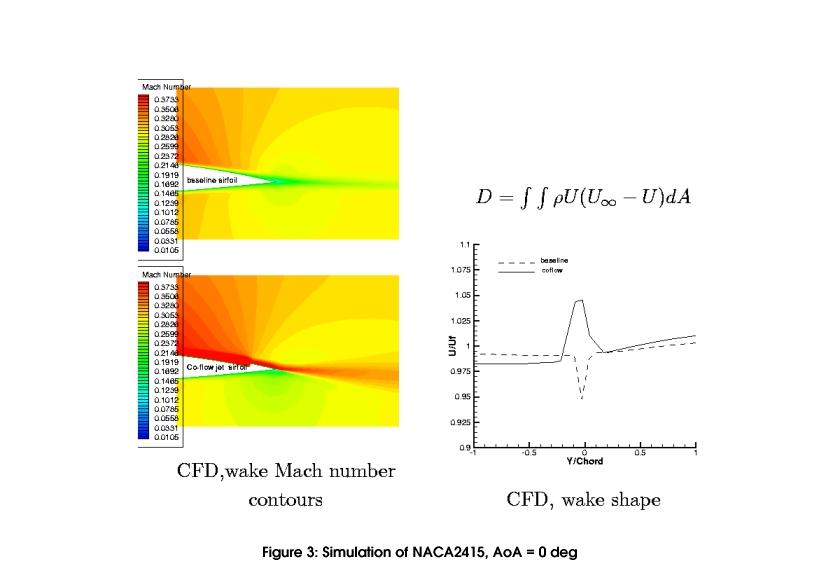
To achieve high performance in aircraft design, revolutionary technology advancement should be pursued to dramatically reduce the weight of aircraft and fuel consumption, and significantly increase aircraft mission payload and maneuverability. Both the military and commercial aircraft will benefit from the same technology.
When a flow control(FC) technique is developed, there may be three issues needed to be considered: 1) Effectiveness: the FC method should have substantial improvement of aerodynamic performance, which primarily includes lift enhancement, drag reduction, and stall margin increase (suppression of separation) ; 2)Energy efficient: the FC method should not cause significantly more energy expenditure. Otherwise, the penalty may outweigh the benefit for the whole aircraft as a system. This includes minimal penalty to the propulsion system, minimal weight increase due to the FC system; 3) Easy implementation: the FC technique should not be too difficult to be implemented.
The new airfoil flow control technique using co-flow jet (CFJ) recently suggested by Zha et al. (CFJ Airfoil Papers) is aimed at considering all the three issues mentioned above: effectiveness, energy efficient, and easy implementation.
In the CFJ airfoil, a high energy jet is injected tangentially on the suction surface near the leading edge and the same amount of mass flow is sucked in near the trailing edge, as shown in the following figures. The turbulent shear layer between the main flow and the jet causes a strong turbulence diffusion and mixing, which enhances the lateral transport of energy and allows the main flow to overcome the severe adverse pressure gradient and stay attached at high angles (AOA). The airfoil always achieves a significantly higher lift due to the augmented circulation. The operating range of AOA, hence the stall margin, is significantly increased. The energized main flow fills the wake deficit and dramatically reduce the airfoil drag, or generates thrust (negative drag) (see Figure 3). CFJ airfoil is to achieve 3 goals: high effectiveness, energy efficient, easy implementation
Since a CFJ airfoil blows and sucks the same amount of mass flow, this creates the so called zero-net mass-flux (ZNMF) flow control. The jet mass flow can be generated by a pumping system (see Fig. 1) or can be recirculated through the propulsion system. This avoids dumping away the jet mass flow and can significantly reduce the penalty of energy expenditure to the overall airframe-propulsion system when compared to the blowing only method. The co-flow jet can be always on during the whole fly mission. The lift enhancement and drag reduction can be controlled by adjusting the injection total pressure, hence the jet mass flow rate, during the mission according to different needs. No moving parts are required.
The coflow jet airfoil concept studied in this research appears to have the following advantages: 1) Very effective to enhance lift and suppress separation; 2) Dramatically reduce drag and can achieve very high CL/CD (infinity when C_D=0) at low AoA(cruise), and very high lift and drag at high AoA(take off and landing); 3) Significantly increase AoA operating range and stall margin; 4) Have small penalty to the propulsion system; 5) Can be applied to any airfoil, thick or thin; 6) Can be used for whole flying mission instead of only take off and landing; 7) Can be used for low and high speed aircraft; 8) Easy implementation with no moving parts;
The above advantages of the CFJ airfoil may derive the following superior aircraft performances: 1) Extremely short distance for take off and landing; 2) Supersonic aircraft to have small wing size matching cruise need, but also have high subsonic performance (e.g. high lift low drag at M<1); 3) High maneuverability, high safety and fast acceleration military aircraft; 4) Very economic fuel consumption; 5) Small wing span for easy storage, light weight and reduced skin friction and form drag; 6) Low noise due to no high lift flap system and weakened wake mixing.
The wind tunnel tests conducted in this research have proved the high performance of the CFJ airfoil. This is the beginning to study and understand the working principle of CFJ airfoil. It is hoped that this research will open a door to a new area of flow control technology for next generation advanced aircraft.


